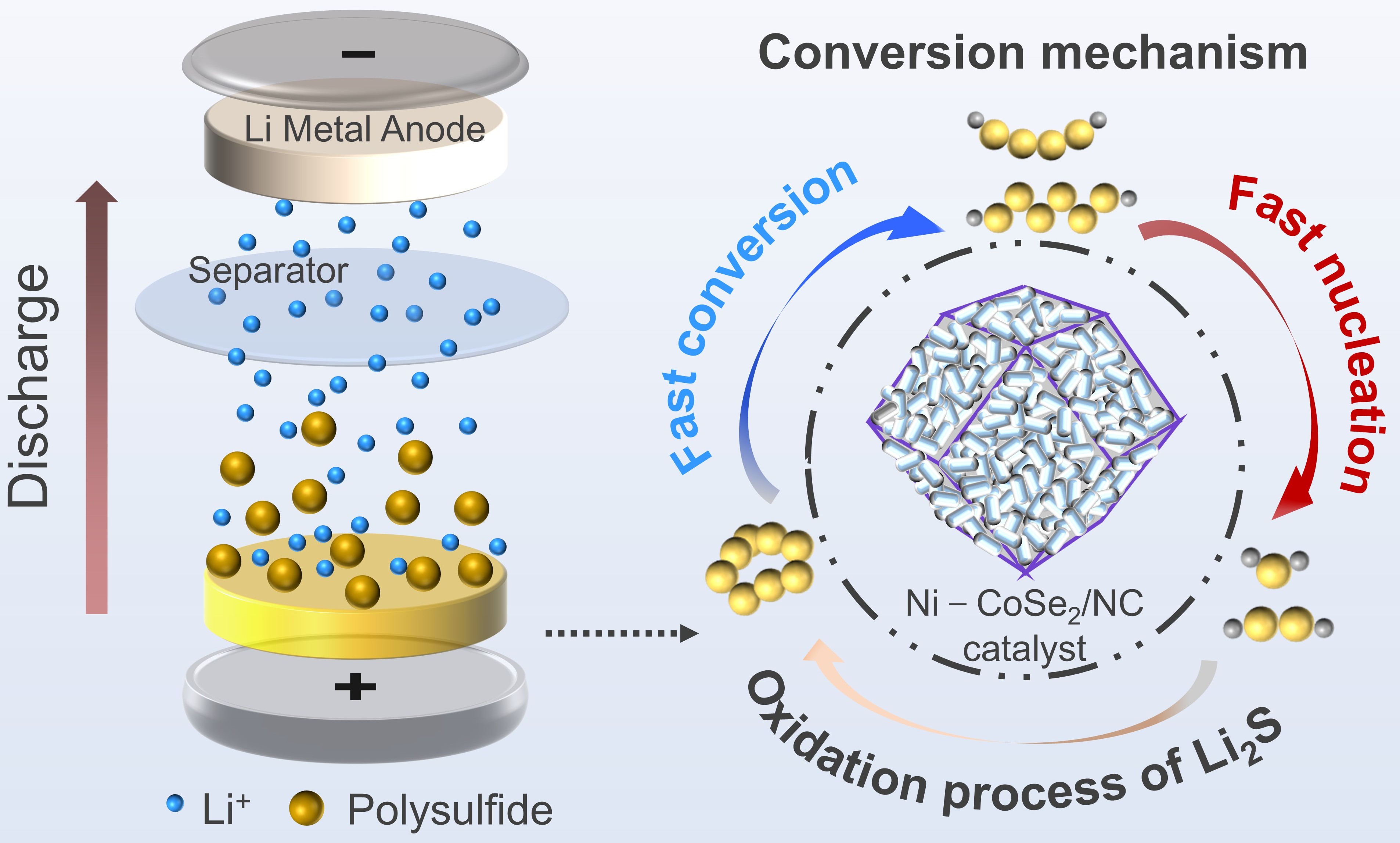Doping strategy for regulating CoSe2 electronic structure to enhance sulfur reaction kinetics in lithium-sulfur batteries

Lithium-sulfur (Li‒S) batteries are regarded as highly promising next-generation energy storage technologies due to their high theoretical specific energy (2600 Wh kg–1), low cost, and the abundance of sulfur. However, their practical application is severely hindered by the shuttle effect of soluble lithium polysulfides (LiPSs) and sluggish sulfur redox kinetics, leading to rapid capacity degradation. The inherent electronic structure of CoSe2, employed as a catalyst, restricts its catalytic efficiency. This work proposed a synergistic strategy combining nickel doping and heterointerface engineering to modulate the electronic structure of CoSe2 and enhance bidirectional sulfur electrochemistry. Combined structural characterization and density functional theory (DFT) calculations demonstrated that Ni doping induced lattice distortion in CoSe2, forming shortened Ni‒Se bonds. This prompted a shift of the Co 3d band towards the Fermi level, thereby significantly enhancing the intrinsic conductivity of the material. Concurrently, lattice defects enhanced the availability of active sites for Li2S nucleation. Augmented by the dual physical/chemical confinement of LiPSs provided by the N-doped carbon skeleton, this design established an “adsorption-catalysis” synergistic mechanism, effectively suppressing the shuttle effect and accelerating conversion kinetics. The fabricated Ni‒CoSe2/NC-based Li‒S battery delivered a high initial specific capacity of 1219 mAh g‒1 at 0.1C and maintained an ultralow capacity decay rate of 0.064% per cycle over 1000 cycles at 1C. Notably, the battery also exhibited exceptional cycling stability under lean electrolyte and high sulfur loading conditions. This study elucidated the enhancement mechanism through electronic structure modulation via integrated experimental and theoretical approaches, providing a novel design concept for advanced energy storage materials.
